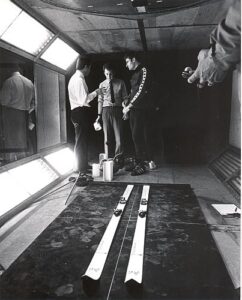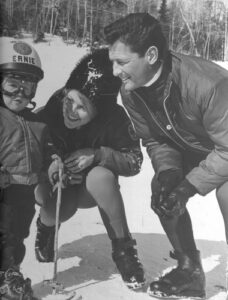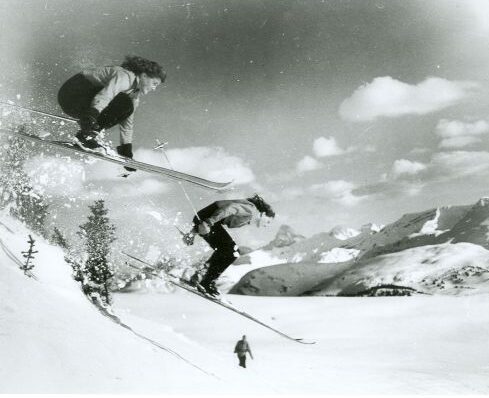Hall of Famer
David L. Jacobs
Affiliated Discipline(s):
Alpine
Hometown:
Montreal, Que. / Boulder, Colorado
Active Career Period:
1957–1988
Induction CSHF:
1988
Induction Category:
Builder
There are few people in the world who can claim the knowledge and experience of Dave Jacobs in so many facets of the sport of skiing. He is a man of many talents. From the time he received his first pair of skis at the age of 13, skiing has remained an integral part of his life. He began as a competitor, being a member of the Canadian National Alpine Ski Team from 1957 to 1961 and winning the Canadian Downhill Championship in 1957. He was also honoured with the Senior Canadian Ski Instructor’s Medal in 1961.
After his competitive career, Dave continued to contribute to the ski industry in various roles. He served as the Head Coach of the Canadian Alpine Ski Team from 1964 to 1967 and held positions such as ski school director at Val-David, Quebec, and designer and manager of the Talisman Ski Area in Ontario. In addition, he established himself as a successful businessman in the ski industry.
Jacobs achieved notable success in national races, including winning the Quebec Kandahar downhill and combined titles in 1956. Despite suffering a broken leg during training as a member of the Canadian Federation Internationale de Ski (FIS) Team in 1958, he made significant contributions to the ski industry.
One of Jacobs’ most significant contributions was his involvement with Bob Lange, the founder of Lange ski boots. In 1965, Jacobs and the Canadian National Alpine team tested Lange’s plastic ski boots. Following constructive criticism from the Canadian team, Jacobs was invited by Bob Lange to offer development help and advice. This collaboration resulted in the redesign of the boots, which proved to be a great success. In 1967, Lange-Jacobs Inc was formed, and a small factory was opened in Montreal to assemble the Lange boots. The partnership flourished, and Jacobs played a pivotal role in the international operations and expansion of the company.
In 1971, Jacobs shifted his focus to clothing after recognizing a market opportunity for innovative and appealing children’s ski wear. He resigned from Lange and formed the Jacobs Corporation, introducing “Hot Gear” clothing in 1972. The brand quickly gained popularity and experienced substantial sales growth. However, financial challenges arose when the Garcia corporation, which provided financing, went bankrupt. Eventually, Hot Gear was sold to a group from Hong Kong.
Undeterred by this setback, Jacobs established David L Jacobs Incorporated in 1978 to market adult racing clothing. He introduced the revolutionary “Spider” stretch pant with injection-molded pads, providing superior protection and flexibility. The Spider racing clothing line became a tremendous success and eventually evolved into Spyder Active Sports, a company synonymous with high-quality skiing clothing.
From his involvement in plastic ski boots to the creation of Hot Gear children’s clothing and the establishment of Spyder, Dave Jacobs has left a lasting impact on the world of skiing through his innovative ideas and contributions.
Please Note: The information gathered here is compiled from a number of sources; it may not be inclusive of all accomplishments. Copyright © 2024, Canadian Ski Museum. For Personal/Educational use only. All Rights Reserved.
Dave Jacobs, June 1966. Western Ski Promotions.
Dave Jacobs competing at 1957 Canadian Ski Championships. Alpine Canada Alpin.
Dave Jacobs (left) at the National Research Council (NRC) in Ottawa, ON. National Research Council (NRC).


David Jacobs. International Ski History.
SUBSCRIBE
